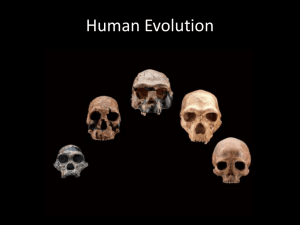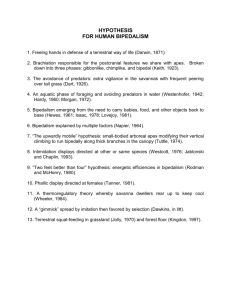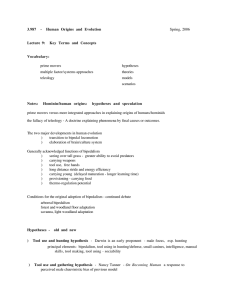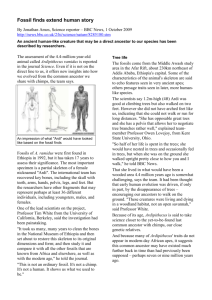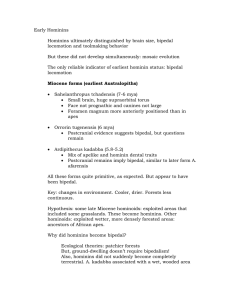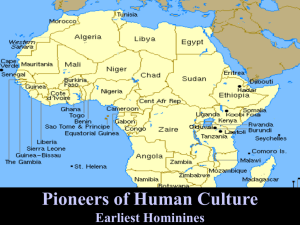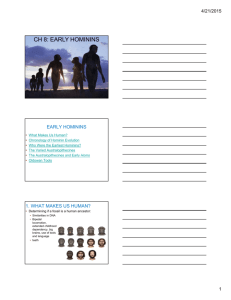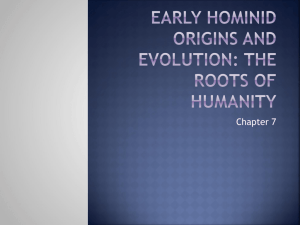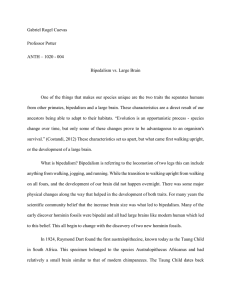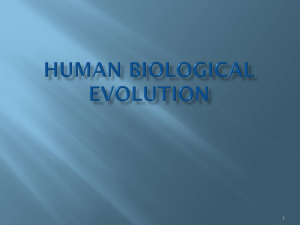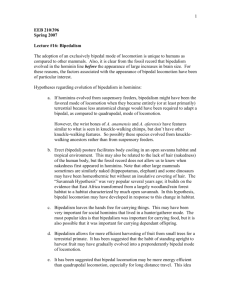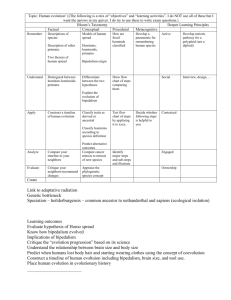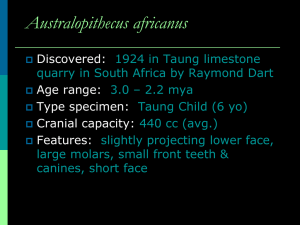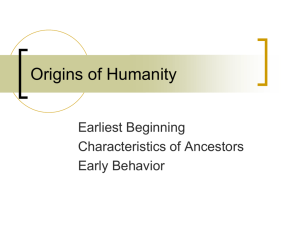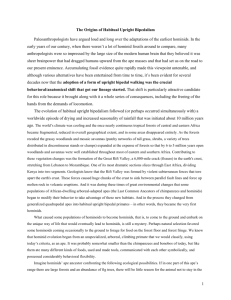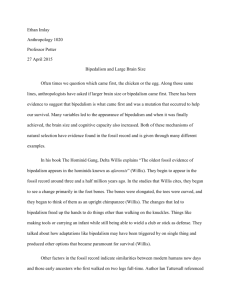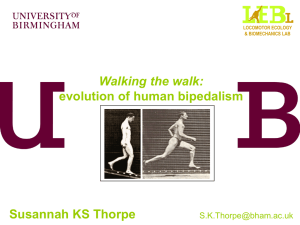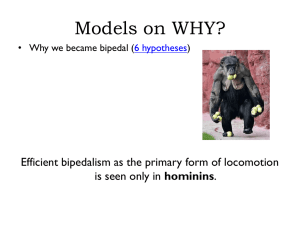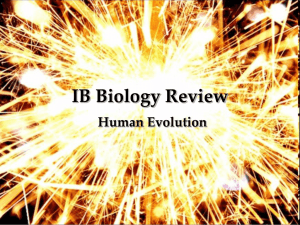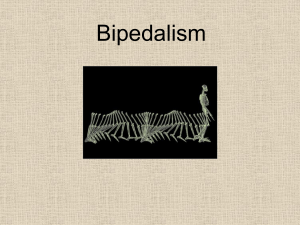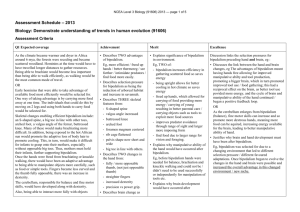Six Big Events in Human Evolution
advertisement
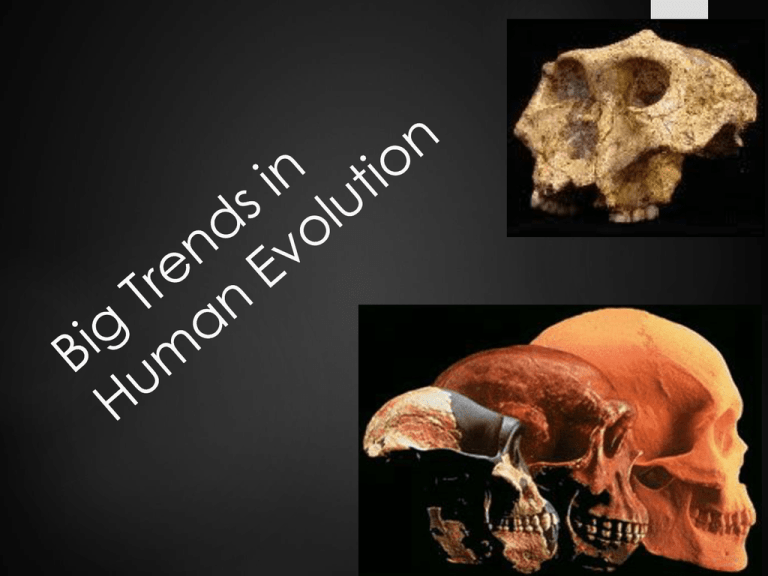
Introduction – Human Evolution Mosaic Evolution: ________________________ With respect to human evolution: • • _____________________ Developed at varying times along our evolutionary history But how did we get here? 1. 2. 3. 4. 5. Anatomical Adaptations for Bipedalism 1. 2. ___________ Increase in ________ Changes to hallux __________ _______________ _____________________ Anatomical Adaptations for Bipedalism Anatomical Adaptations for Bipedalism 3. _______________________ Increase in surface area Extension ____________ __________ - angled towards the middle of the body Anatomical Adaptations for Bipedalism 4. Pelvis _____________________ ______________________ Anatomical Adaptations for Bipedalism 5. _________________ ____________________ Morphological Changes 6. Foramen Magnum – _______________________ Bipedal – ____________________ Quadrupedal – ______________________ Hominin Evolution Pre-dating Australopithecus Hominins discovered in _________________ Bipedal We – debatable in some species will focus on the species for which there is ________________of bipedalism Ardipithecus ramidus Middle Awash area of Ethiopia Approximately 4.4mya Found: 1. 2. 3. Ardipithecus ramidus Indicators of Bipedalism ____________________ Femur and pelvis Humerus – _______________ Foot Phalanges Ardipithecus ramidus Ardipithecus ramidus Ardi = “facultative” biped What do you think this term mean? Australopithecus afarensis _______________ Hadar, Ethiopia Laetoli, Tanzania 3.6-3.0 Forest, mya woodland, grassland A. afarensis – Traits Bipedal 1. 2. Some Arboreal Abilities Retained 1. 2. A. afarensis – Traits A. afarensis – Traits Type Fossil – “Lucy” Found: 1974, Hadar, Ethiopia ____________________ Both arms Much of the pelvis Left femur, right tibia Hand and Foot bones Adult (based on 3rd molar) _____________ Type Site: Laetoli Footprints Tanzania 3.6 mya 75 feet long preserved _____________ ___________ ______________ A New Hominin Australopithecus sediba Discovered in 2008; located in South Africa Proposed by some to be the best candidate __________ _________________ A New Hominin Features: _______________ _ Pelvis – ________ of Australopithecu s-like and Homo-like features Hand – Foot & ankle shape – The Genus Homo – Overall Trends Characterized by: Introduction To Homo habilis Contemporaneous with _______________________ Anatomically different than specimens assigned to the genus _______________________ Distinguishing feature – _________________ H. habilis shows an ___________________as compared to Australopithecines Homo habilis – OH 24 Location: Olduvia Gorge (Africa) Comparison to Australopithecines: “Twiggy” or OH 24 Dated to ~ 1.8mya 1. 2.
